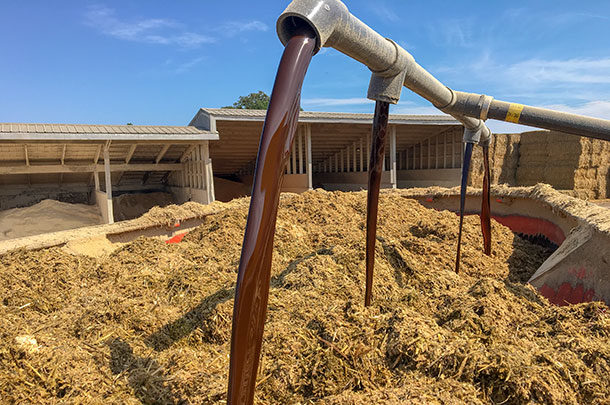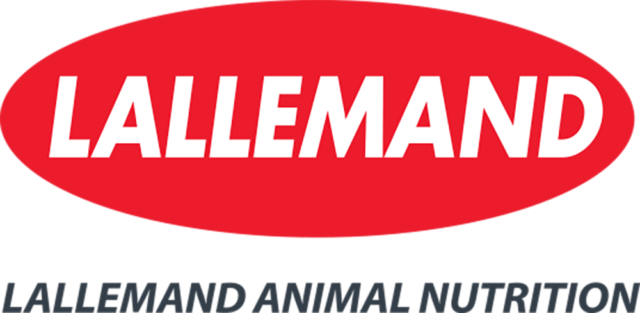With the challenging weather many of us experienced last summer, you may be anxious about your haylage and corn silage inventories leading up to the first cut of 2023. Whether you’re feeding higher corn silage levels now to stretch out haylage until first cutting and then vice versa following first cut, we have devised some strategies to get you through it. Spoiler alert: Each strategy involves feeding molasses to aid with these forage ratio changes while promoting steady feed intakes and effective fibre digestibility.
Benefits of molasses
Supplementing feed with liquid molasses is one way to improve the nutrient density and digestibility of feed for dairy cows. Molasses is known to be very palatable and has many positive benefits on rumen health. Sugar supplementation is known to support microbial growth in the rumen, particularly for fibre-digesting bacteria, speeding up fibre degradation. This, in turn, allows for greater dry matter intake (DMI). This was demonstrated in research from both the University of Guelph and the U.S. Dairy Forage Research Center, who found significant increases in daily DMI per cow when feed is supplemented with liquid molasses.
Molasses supplementation and forage ratio changes
Any changes to a dairy cow’s diet are going to have a direct impact on rumen health and feed intake while the animal adapts to that change. When haylage runs low and corn silage, for example, is overcompensated, this can have a direct impact on rumen health and can cause subsequent impacts to health and production. By supplementing liquid molasses, we can promote consistent DMI, resulting in a healthy rumen despite these forage ratios changing.
Based on research from the University of Guelph, liquid molasses supplementation can limit unwanted feed sorting behaviours, due to the palatability and sticky texture coating the TMR, further supporting DMI during periods with dietary changes.
Given the general higher sugar content of haylage, and higher starch content of many silages when haylage or silage is running low, supplementing a molasses-based liquid feed can help bridge that sugar and energy gap.
Molasses has been shown to have many positive benefits on energy balance and metabolic health. The University of Guelph has shown that feeding molasses to dry cows helped improve metabolic health into the fresh period and that supplementing a molasses-based liquid feed to lactating dairy cows can help reduce body condition loss and the number of repeated positive ketosis tests in cows monitored to 60 days in milk (DIM).
Research from the University of Alberta has shown that feeding high-sugar feeds is an excellent strategy for providing energy to ruminants without increasing risks of subacute acidosis, seen when feeding high-starch feeds. The U.S. Dairy Forage Research Center has theorized that sugar can be utilized by the microbes for glycogen synthesis, allowing the sugar to be converted and stored as a short-term energy source when needed. This would temporarily reduce fermentation and acid production in the rumen, potentially contributing to higher rumen pH and a more stable, healthy rumen environment.
We know from copious research done within the dairy industry that lactating cows will eat more dry matter and produce more milk when fed forages with higher NDF digestibility. Research from Cornell University shows that corn silage, compared to haylage (legume or grass), has the highest NDF digestibility by 240 hours or 10 days after consumption. However, grass haylage has the strongest acute NDF digestibility by 30 hours following consumption. Therefore, when adjusting forage ratios, we need to be mindful on the impact it may have on NDF digestibility.
Research from Ohio State demonstrated that supplementing liquid molasses can lead to increases in NDF digestibility when included in diets to a maximum of 5% of the diet dry matter. The theory behind this is that anaerobic fungi in the rumen, responsible for breaking down forage through cellulase enzymes, are attracted to simple sugars and can ferment sucrose and glucose. Thus, by feeding sugars, you are increasing the population of anaerobic fungi in the rumen and improving NDF digestibility.
Molasses and the feedout period following ensiling
The feedout period begins as soon as the silo is opened and continues until all the silage is fed. Once the silage is re-exposed to oxygen, yeasts and moulds will become active again, converting fermentation acids and residual sugars into water, carbon dioxide and heat. During this phase, the new silage inclusion may cause the TMR to heat up, limiting feed intakes and potentially promoting unwanted feeding behaviours. By supplementing liquid molasses, you improve the palatability of the diet and encourage feed intake while limiting feed sorting behaviours.
Consistent, balanced feed intake will help keep that rumen healthy and the cow productive. Always consult your herd nutritionist and monitor the quality of your silage and mycotoxins levels.








